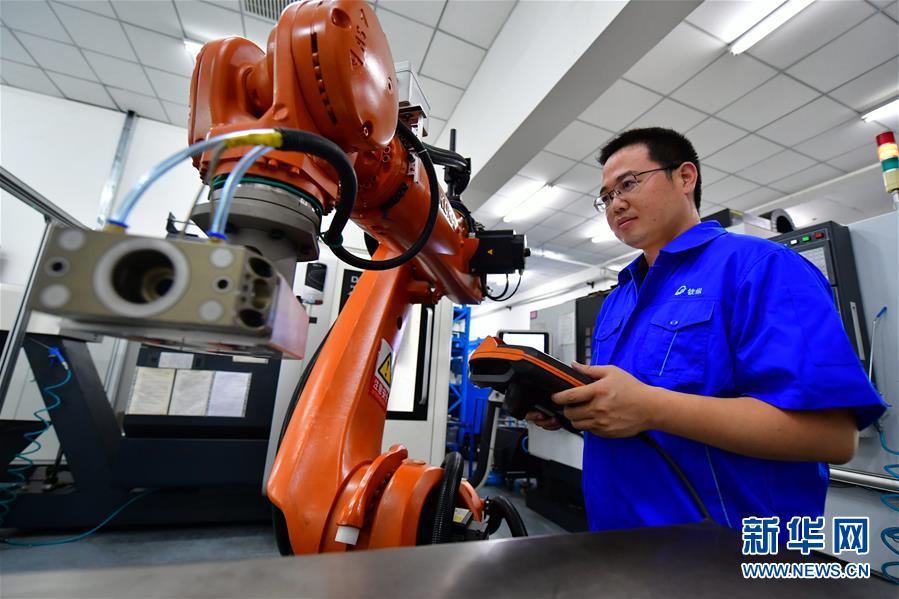


A worker operates a robot in a company producing electric mechanical products in Langfang, Hebei province. (Photo/Xinhua)
Since 1949, China has gone through profound changes in its industry and demand structures and substantially promoted its economy, according to a report issued by the country’s National Bureau of Statistics (NBS) earlier this month.
The added-value of the service sector accounted for 52.2 percent of China's total GDP in 2018, up 23.5 percentage points than that in 1952. 46.3 percent of the country’s workforce was employed in the tertiary industry, 37.2 percentage points higher than that in 1952.
The service sector contributed to 59.7 percent of China’s economic growth, 23.6 percentage points higher than that of the secondary industry, said Du Xishuang, head of the Department of Service Statistics under the NBS.
The upgraded industrial structure, together with new technologies such as e-commerce and supply chain, facilitated the growth of emerging services. For example, the country handled a total of 50.7 billion express parcels in 2018, up 26.6 percent year-on-year.
China's reform in trade structure has also made progress. Primary products accounted for more than 80 percent of China's exports back when the country was founded. However, the proportion dropped to 5.4 percent and that of manufactured goods increased to 94.6 percent last year.
Meanwhile, the consumption potential of China was further unleashed, with consumption contributing 76.2 percent to economic growth last year.
“Approximately 140 million Chinese families of three enjoy an annual income of between 100,000 and 500,000 yuan, meaning they can afford cars, houses and leisure travel, which projects promising market potential," said Ning Jizhe, head of NBS.
 Fire brigade in Shanghai holds group wedding
Fire brigade in Shanghai holds group wedding Tourists enjoy ice sculptures in Datan Town, north China
Tourists enjoy ice sculptures in Datan Town, north China Sunset scenery of Dayan Pagoda in Xi'an
Sunset scenery of Dayan Pagoda in Xi'an Tourists have fun at scenic spot in Nanlong Town, NW China
Tourists have fun at scenic spot in Nanlong Town, NW China Harbin attracts tourists by making best use of ice in winter
Harbin attracts tourists by making best use of ice in winter In pics: FIS Alpine Ski Women's World Cup Slalom
In pics: FIS Alpine Ski Women's World Cup Slalom Black-necked cranes rest at reservoir in Lhunzhub County, Lhasa
Black-necked cranes rest at reservoir in Lhunzhub County, Lhasa China's FAST telescope will be available to foreign scientists in April
China's FAST telescope will be available to foreign scientists in April "She power" plays indispensable role in poverty alleviation
"She power" plays indispensable role in poverty alleviation Top 10 world news events of People's Daily in 2020
Top 10 world news events of People's Daily in 2020 Top 10 China news events of People's Daily in 2020
Top 10 China news events of People's Daily in 2020 Top 10 media buzzwords of 2020
Top 10 media buzzwords of 2020 Year-ender:10 major tourism stories of 2020
Year-ender:10 major tourism stories of 2020 No interference in Venezuelan issues
No interference in Venezuelan issues
 Biz prepares for trade spat
Biz prepares for trade spat
 Broadcasting Continent
Broadcasting Continent Australia wins Chinese CEOs as US loses
Australia wins Chinese CEOs as US loses